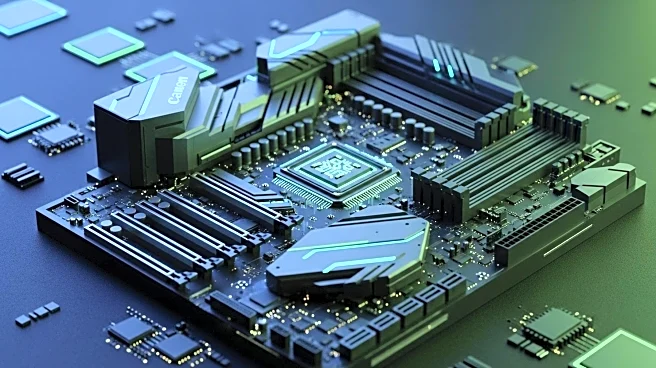What is the story about?
What's Happening?
Qualcomm has announced its latest flagship mobile platform, the Snapdragon 8 Elite Gen 5, during the 2025 Snapdragon Summit. The new chip is manufactured using TSMC's 3 nm N3P process, offering higher transistor density than its predecessor. The platform features a self-developed Oryon CPU architecture, moving away from the standard ARM solution. It includes a '2+6' all-big-core configuration, with two high-performance cores running at up to 4.74 GHz and six efficiency cores at 3.63 GHz. The total cache has been increased to 32 MB, enhancing multitasking capabilities and sustained performance. iQOO has confirmed that its upcoming iQOO 15 will be among the first smartphones to incorporate this new chip, showcasing impressive benchmark results on Geekbench.
Why It's Important?
The introduction of the Snapdragon 8 Elite Gen 5 platform marks a significant advancement in mobile technology, particularly in the AI era. By adopting a self-developed CPU architecture, Qualcomm is setting a new standard for performance and efficiency in mobile devices. This development is likely to impact the smartphone industry by pushing competitors to innovate and improve their offerings. The enhanced multitasking capabilities and performance could lead to more sophisticated applications and user experiences, benefiting consumers and developers alike. As iQOO 15 is set to be one of the first devices to feature this chip, it positions iQOO as a leader in adopting cutting-edge technology, potentially increasing its market share.
What's Next?
The iQOO 15 is expected to launch in the coming months, and its performance with the Snapdragon 8 Elite Gen 5 will be closely watched by industry analysts and consumers. Other smartphone manufacturers may follow suit, integrating the new chip into their devices to remain competitive. Qualcomm's continued innovation in mobile platforms could lead to further advancements in AI applications and mobile computing power. As the technology becomes more widely adopted, it may drive changes in app development, gaming, and mobile computing, influencing how users interact with their devices.
Beyond the Headlines
The shift to a self-developed CPU architecture by Qualcomm could have long-term implications for the semiconductor industry, potentially reducing reliance on ARM solutions and encouraging more companies to develop proprietary technologies. This move might inspire other tech companies to invest in research and development to create unique solutions, fostering innovation and competition. Additionally, the increased performance capabilities of the Snapdragon 8 Elite Gen 5 could lead to new possibilities in mobile AI applications, enhancing user experiences and expanding the scope of mobile technology.
AI Generated Content
Do you find this article useful?













